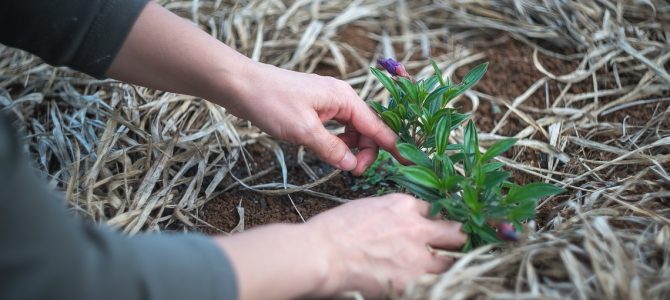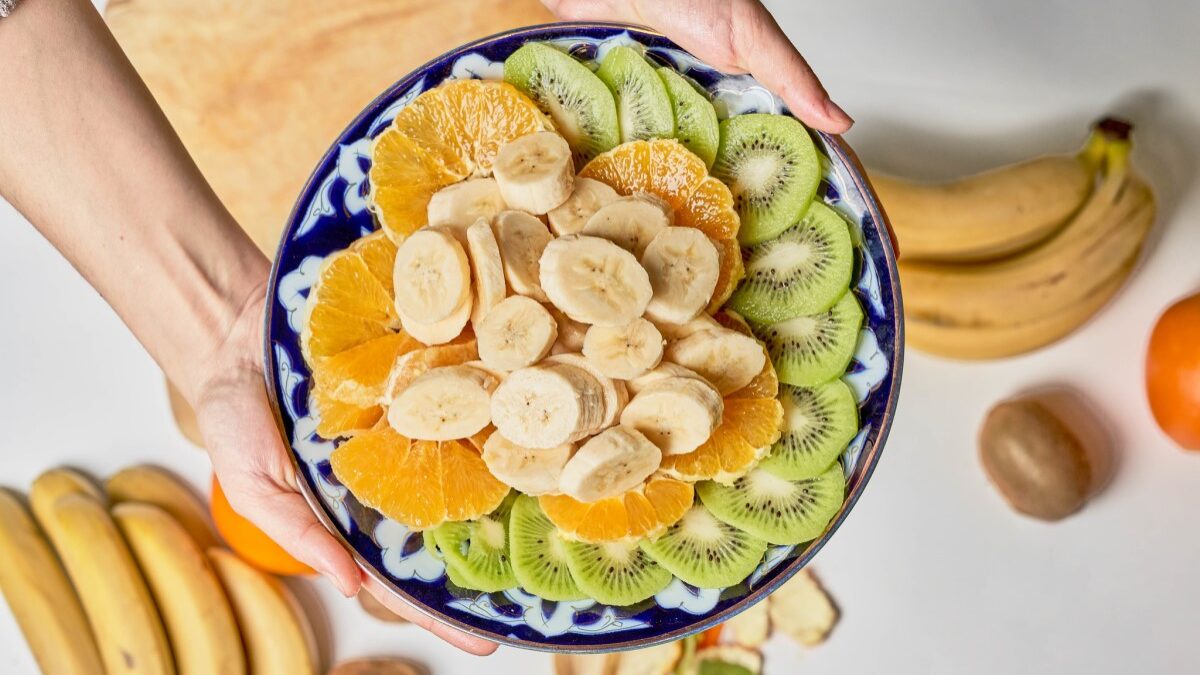
As of this week, it is officially spring. More old-fashioned folk would be sprouting seedlings in preparation for planting, picking strawberries for jam, and getting excited about rhubarb pie and pickled asparagus. But most of us modern Americans get our produce from the grocery store, our jam from Smuckers, and our pies pre-baked. Are we missing out on something?
The fact is, gardening and cooking used to be “women’s work.” Prior to the 1950s and 60s, our great-grandmothers (or great-great grandmothers) often produced, pickled, and canned much of their families’ food. My great-grandmother had a large vegetable garden, cows, chickens, and a field of sweet corn. She baked her own bread, preserved her produce, and wrote down hundreds of recipes by hand.
This from-scratch, DIY labor was once essential to a healthy and economical household. But when “housewives” left the home for 9 to 5 jobs and the empowerment of a career, many families forgot these traditions. Our homes became less self-sustaining, and more wasteful. We became consumers, not producers. This has little to do with intentional wastefulness, but it is the natural consequence of a people without extra time.
These various “housewife” activities, time-consuming though they may be, are both interesting and empowering. They get you outside. They foster money-saving habits in your home. And they help you appreciate more deeply the cycles of nature, the beauty of science, and the diversity of our food.
So here are some ideas for the man or woman who wants to try out some long-forgotten but eminently useful domestic arts. This is Housewifery 101.
1. Plant and Tend a Vegetable Garden
If you live in an apartment, this can be as simple as planting a mini herb garden in a window box or pot. If you have more property, you can try out raised beds or a small garden plot.
When starting a garden, it’s useful to do some research into your soil and local pests. If you need ideas on keeping pests at bay, Pinterest is full of them. I’d also recommend “The New Self-Sufficient Gardener,” by John Seymour.
What to plant depends on your region, and the amount of sunlight and space you have. This guide helps you determine what you should plant, based on your zone and sunlight levels. Meanwhile, “Carrots Love Tomatoes” is a fascinating book that also helps you figure out what to plant where: believe it or not, many plants function as friends and companions to each other, warding off pests and helping each other grow.
Once your veggies are planted, the fun has just begun. Summer days will offer ample time to water, weed, and harvest. The more dirt you get under your fingernails, the more domestic points you score (and the more you fight depression by increasing serotonin levels).
2. Build a Compost Pile
We all need to reduce waste. One of the simplest and easiest ways to do this is to create a compost pile, and put kitchen scraps in your garden, rather than in the dumpster. Yard and kitchen waste make up 26 percent of U.S. waste, so this is an easy way to combat that number.
But composting isn’t just a service-oriented task: creating and tending your own compost will actually make your garden far healthier and happier. “This resulting soil—which passionate gardeners often call ‘black gold’ and Martha Stewart sweetly describes as having the texture of ‘crumbled chocolate cake’—is rich in nutrients and will help retain moisture when added to your garden beds or potted plants.”
Here are some basic instructions for happy, productive compost (more detailed instructions here). To have a good compost pile, you need a good balance of “brown matter” (leaves, bark, paper, sawdust), which is high in carbon, and “green matter” (food scraps and coffee grounds), which is high in nitrogen. “A good balance of carbon and nitrogen makes the microbes’ and worms’ jobs easier, meaning a faster decaying process, less smells, and healthy, rich, dark-brown compost that’s damp, but not too wet — think wrung-out sponge.”
Here are some things we regularly compost in our household:
- Coffee grounds
- Egg shells
- Vegetable scraps (onion skins, potato peels, etc.)
- Fruit scraps (apple cores, banana skins, etc.)
- Raked leaves in autumn
- Grass clippings in summer
You can also throw dryer lint, tea bags, bread scraps, and old wine in your compost pile.
What should you avoid composting? The manure of horses, chickens, and rabbits is helpful for compost, but you want to avoid the manure of carnivores (like dogs and cats). Similarly, don’t add animal products (meat, bones, butter, milk). Oily foods are a no-no, as well. Remember that certain goods are more likely to attract rodents and snakes.
3. Make Your Own Broth
This is another thing you can do with those kitchen scraps to stretch your ingredients and save money. Broth is a great ingredient for all sorts of soups, risotto, and even cooking beans.
- Homemade chicken broth recipe (you don’t even need the extra vegetables and herbs)
- Homemade vegetable broth how-to
- How to make beef broth in a slow cooker
4. Cook Dried Beans Yourself
A lot of people don’t do this because of the time involved. But you can actually cook dried beans in a slow cooker, with minimal effort. If you have a pressure cooker (best investment ever), you can cook them in 45 minutes to an hour (depending on the type of bean). This saves money in multiple ways: a can of beans is usually about a dollar. But you can get a 64-oz bag of dried beans for about seven bucks—and it’ll last you a while. A pound of dried black beans will give you two pounds and five ounces once they’re cooked. What’s more, you can use the resulting bean broth in soups and stews.
5. Bake Your Own Bread
These are some easy recipes to get you started. Honestly, baking bread is not hard. It just requires some time. But if you make three loaves on a Saturday afternoon, you can freeze two, and won’t have to bake anymore for a while.
While you’re baking bread like a boss, you should try making homemade tortillas (you’ll never go back) and homemade pizza dough.
You can watch Michael Pollan’s “Air” episode on the Netflix documentary “Cooked” for more baking inspiration and ideas. Though, fair warning: he may convert you to making sourdough bread, which takes a little more planning and time.
6. Do Your Own Canning and Pickling
Growing up as a country girl in Idaho, this was a staple of our year. We made strawberry jam in the spring, tomato sauce and pickles in the summer, and applesauce in the fall. Spicy pickled green beans and canned cinnamon peaches filled our stomachs through long, dark winter months.
Each of the above links lead to a canning how-to and/or recipe. Hopefully they inspire you to try out some new traditions with your families or friends this year. It’s easy to turn a Saturday into an applesauce-making party, or a corn shucking day (for making this frozen corn).
When you get to wake up on a cold winter morning, toast a piece of homemade bread, and spread it with a thick smear of homemade strawberry jam, you’ll thank me.
But Wait—There’s More
These are simple things that most of us have time to do. But there are more advanced domestic activities that, admittedly, I don’t have time to do—but have seen others do successfully. They include grinding your own flour (did you know you can order wheat berries and other whole grains in bulk online?), making your own yogurt, drying herbs, making your own soap and house cleaners… the list goes on and on.
These are just a few ideas to care for your body, family, home, and community. Many of these methods also, coincidentally, happen to be good for the planet. So it’s worth taking a break from the more consumptive habits of our culture, and asking instead: What can we create?









